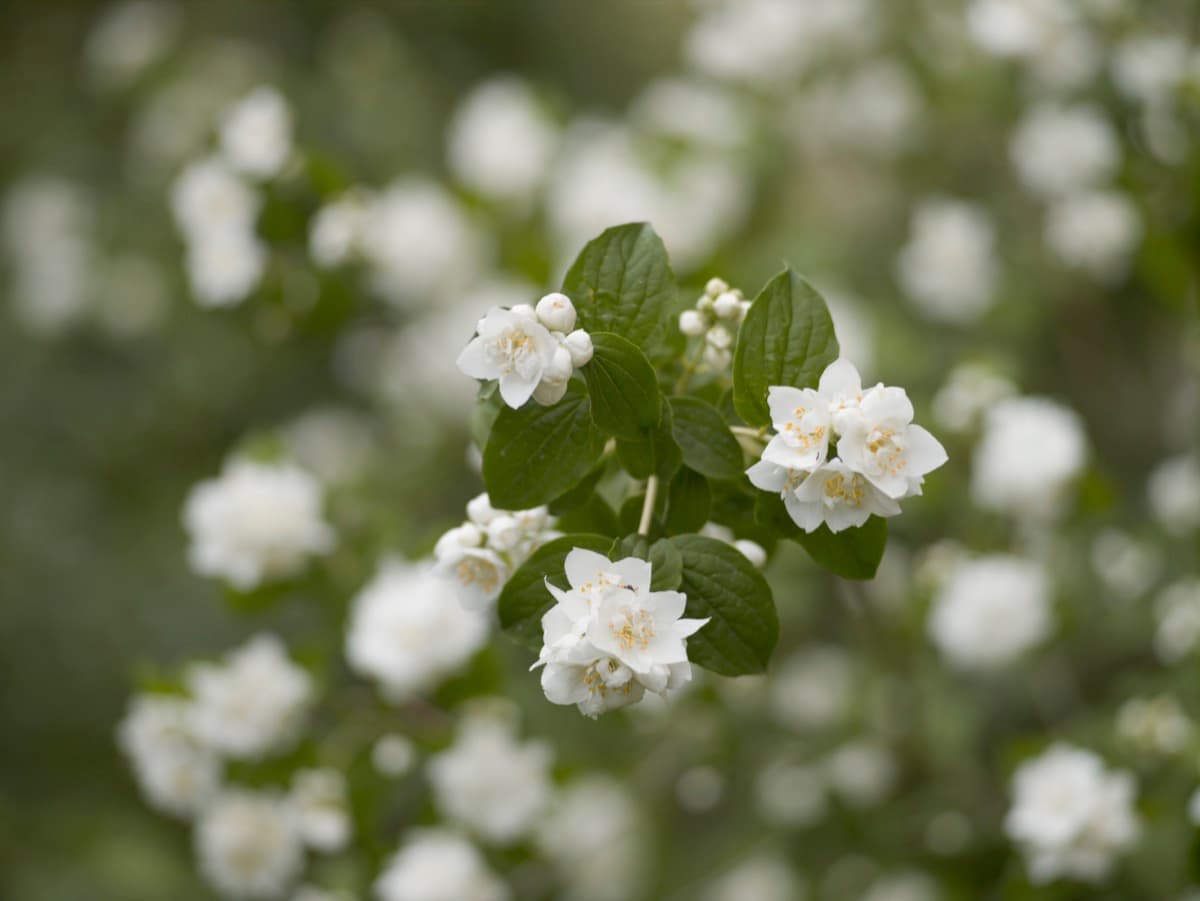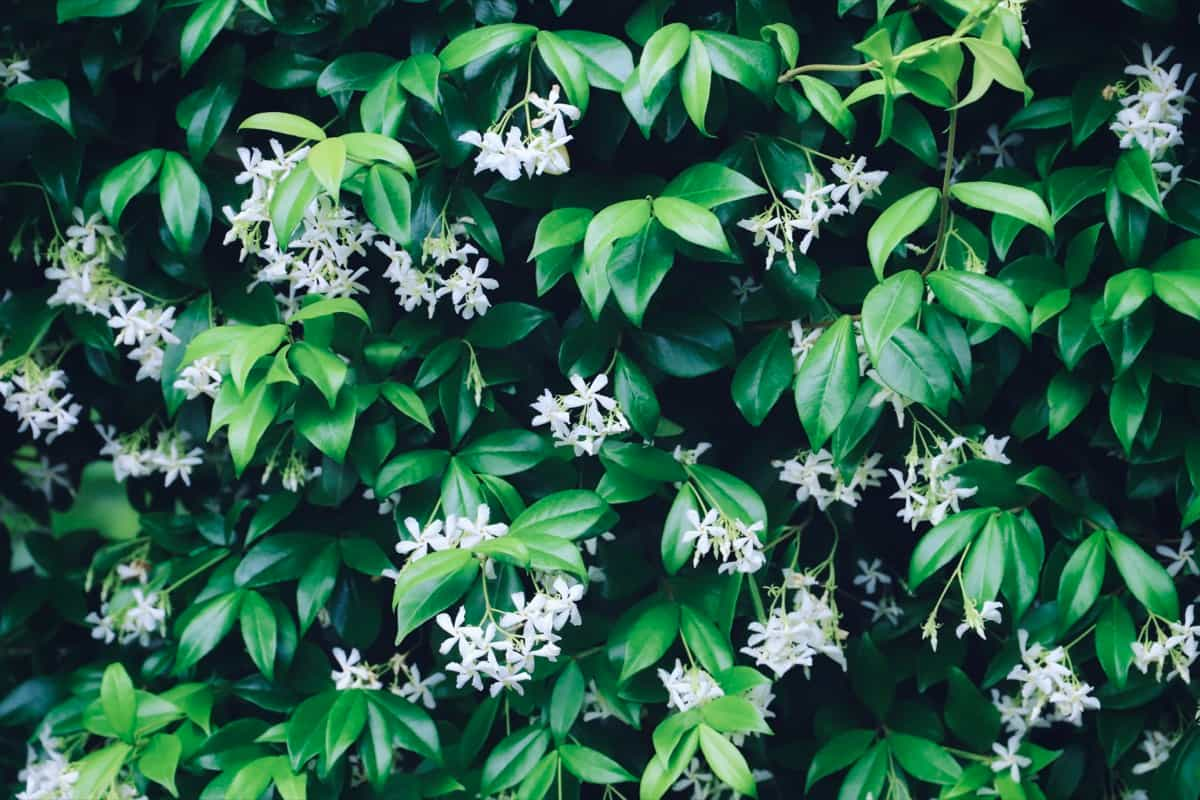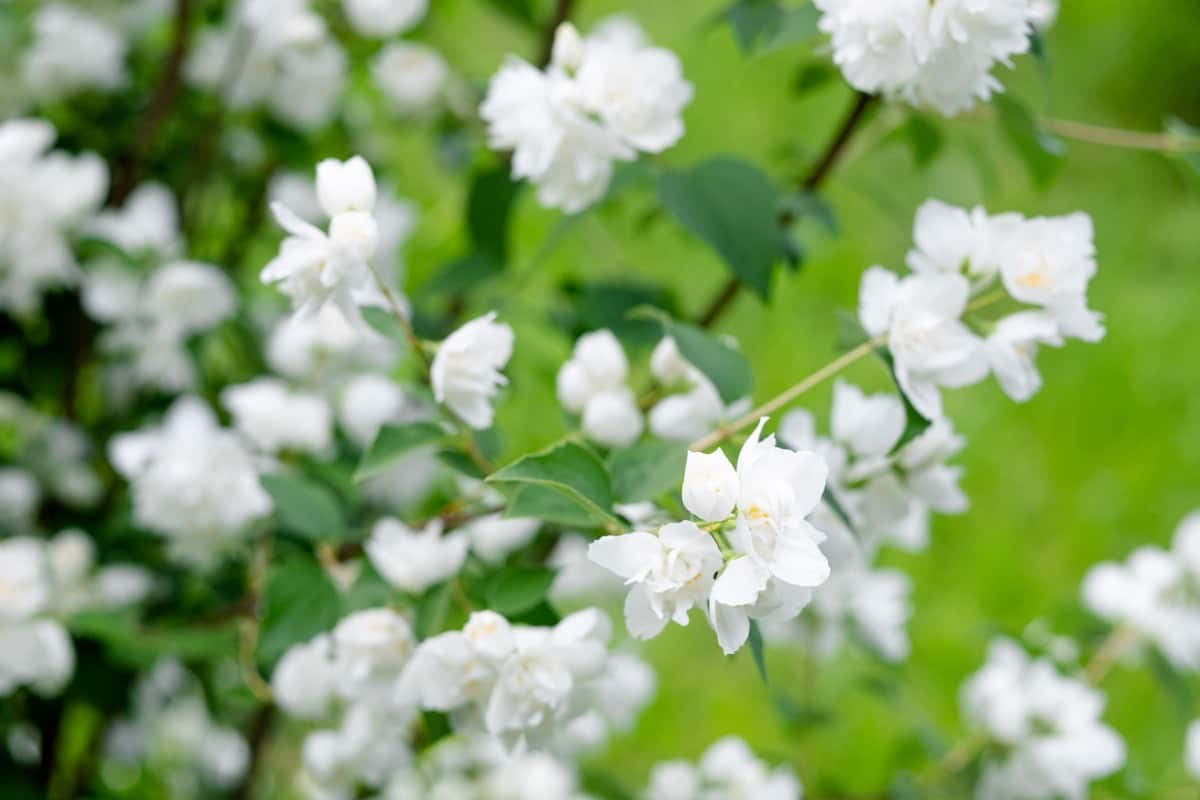To protect your jasmine plant, identify the specific pest causing trouble. Regularly inspect your plants to catch infestations early and remove pests by hand if the problem is small. Embrace natural control methods like companion planting, insecticidal soap, and neem oil. Only resort to pesticides as a last option, following label instructions carefully. Red-scale pests can cause visible Damage, such as brown bumps and yellowing leaves. Prevent infestations by inspecting plants, pruning infested branches, and quarantining new additions.

Treat affected plants with water, insecticidal soap, neem oil, or pesticides if necessary. Additionally, adopt cultural controls, manage water properly, and encourage natural predators like ladybugs and lacewings for long-term pest management. This blog post will discuss the most common pests in Jasmine, including their symptoms, best treatments, prevention, and management.
Common Pests in Jasmine
Thrips Damage on Jasmine Plant
- Identifying Thrips: Look for silvering or discoloration, deformed growth, scarring, silver speckles on leaves, wilted flowers, leaf drops, and black excreta. Thrips are slender, yellowish, or pale brown insects that crawl or move within the plant foliage.
- Prevention: Choose thrips-resistant jasmine cultivars and avoid planting in high thrips population areas. Regularly inspect plants for symptoms of infestation and maintain good garden hygiene by removing debris and fallen leaves. Proper watering practices create an unfavorable environment for thrips.
- Treatment: Utilize row covers as a physical barrier, and employ insecticidal soap or neem oil. Prune and dispose of affected areas carefully.
- Control and Management: Cultural controls involve planting resistant varieties, inspecting plants regularly, and using row covers. Chemical controls include applying insecticidal soap or neem oil. Embrace natural controls by releasing beneficial insects or implementing companion planting.
Bud worms Damage on Jasmine Plant
- Symptoms of Damage Larval Presence, decreased flowering, Bud and flower damage, Damaged foliage, and Stunted growth. How to Identify Bud worms are most active during the warmer months, usually in spring and summer; Bud worms typically chew on the petals and reproductive parts of the buds and flowers; Bud worms leave behind droppings, also known as frass, budworms primarily target the buds and flowers of jasmine plants.
- Prevention: Inspect jasmine plants for budworm signs, including buds and flowers. Opt for resistant jasmine varieties and maintain proper sanitation. Encourage natural predators like birds, ladybugs, lacewings, and parasitic wasps.
- Treatment: Frequent inspections enable early detection and immediate treatment. Keep the area around jasmine plants clean to eliminate potential hiding spots. Utilize Bt, a bacterium targeting caterpillars.
- Control and Management: Cultural controls involve removing weeds and debris, planting resistant jasmine varieties, and applying milky spore treatment in spring. Natural controls encompass promoting bird and ladybug populations and using insecticidal soap or neem oil.
Moth Damage on Jasmine Plant
- Symptoms: Damage signs include skeletonized leaves, webbing enclosing caterpillars, and the presence of frass.
- Identification: Moths have distinct flight patterns and tend to rest or hide during the day. They come in various sizes and colors.
- Prevention: Prune and remove infested buds, regularly inspect plants for moth activity, avoid over-fertilization, and use balanced fertilizers.
- Treatment: Wear gloves to manually remove caterpillars, disposing of them in soapy water or sealed bags. Properly dispose of pruned material. Implement good cultural practices like regular watering, appropriate fertilization, and proper pruning.
- Control and Management: Consider companion planting with Jasmine. Monitor plants for moth activity, use low-intensity or yellow lights, and avoid overwatering to prevent fungal diseases and moth attraction.
Leaf roller Damage on Jasmine Plant
- Symptoms: Rolled leaves, chewed or skeletonized leaves, holes, silk threads, and droppings (frass).
- Identification: Rolled leaves may appear distorted or tubular. Leaf roller caterpillars are usually green or brown, with a cylindrical body around 1 cm (0.4 inches) long.
- Prevention: Encourage natural predators like birds, parasitic wasps, and predatory insects in your garden. Properly dispose of pruned material to prevent the spread of caterpillars. Early detection is crucial for prompt action.
- Treatment: Monitor and prevent future infestations. Use Bt, a biological control agent that targets caterpillars, including leaf rollers. Follow recommended dosage and timing. If manual removal and pruning are insufficient, consider insecticidal sprays formulated specifically for leaf rollers.
In case you missed it: Common Rose Plant Damaging Pests: Symptoms, Treatment, Prevention, and Management

Aphids Damage on Jasmine Plant
- Symptoms: Distorted and stunted new growth, yellowing of leaves, wilting, and leaf drop in severe cases.
- Identification: Look for clusters or colonies of aphids on the plant. They have piercing-sucking mouthparts and excrete a sugary substance called honeydew.
- Prevention: Regularly inspect jasmine plants for aphid activity. Early detection is key. Maintain healthy plants and clean garden areas to minimize hiding places for aphids.
- Treatment: Use systemic insecticides for long-term control or introduce beneficial insects like ladybugs or lacewings. Neem oil is a natural option for aphid control.
- Control and Management: Monitor jasmine plants regularly for aphid activity. Consider using pyrethrin-based insecticides derived from chrysanthemum flowers.
Webworms Damage in Jasmine
Symptoms
- Defoliation of jasmine plants
- The skeletonized appearance of leaves
- Silken webs or tents created by webworms
Identification
- Look for webs or silken tents on branches and leaf clusters
- Webworm larvae are caterpillar-like and vary in color and size
Prevention
- Practice good garden sanitation
- Regularly inspect plants and remove webs or tents
- Consider insecticidal treatments for severe infestations
Treatment
- Encourage natural predators of webworms
- Manually remove webworms for limited infestations
- Maintain plant health through proper care
- Apply insecticides labeled for webworm control if necessary
Control and Management
- Maintain plant health and monitor for webworm activity. Repeat treatments if needed.
- Use insecticides specifically labeled for webworm control in severe cases.
Whiteflies Damage on Jasmine Plant
Symptoms
- Yellowing leaves
- Wilting leaves
- Stunted growth
- Presence of honeydew
- Sooty mold development
Identification
- Small, white insects that fly away when disturbed
- Found on the underside of leaves
- It can produce a sticky honeydew substance
Prevention
- Plant-resistant rose varieties
- Regularly inspect roses for signs of infestation
Treatment
- Remove infested leaves and destroy them
- Use Yellow Sticky Traps to catch adult whiteflies
- Apply insecticidal soap or neem oil
- Consider pesticide application as a last resort
Control
- Release beneficial insects like ladybugs to control the whitefly population
- Utilize cultural, chemical, and natural methods for whitefly control
Red Spider Mite Damage on Jasmine Plant
Symptoms of Damage
- Premature leaf drop
- Stippling or speckling
- Discolored leaves
Identification
- Red spider mites can vary in color from red to orange, yellow, or greenish-brown
- They have an oval-shaped, flat body
Prevention
- Maintain healthy plants through proper care and avoid over-fertilization
- Ensure adequate air circulation and spacing between jasmine plants
- Encourage natural predators of red spider mites, such as ladybugs and lacewings
Treatment
- Use a strong force of water to spray affected jasmine plants, targeting the undersides of leaves
- Apply neem oil or insecticidal soap specifically formulated for mite control
Control and Management
- Regularly inspect jasmine plants for signs of red spider mite infestations.
- Apply horticultural oil during appropriate seasons as instructed.
Green Leafhoppers Damage in Jasmine
Symptoms of Damage
- Yellowing leaves
- Stippling or speckling
- Leaf curling
Identification
- Green leafhoppers are small insects, usually 3 to 10 millimeters in length
- They can be green, yellow, or brown
In case you missed it: Rose Rust Disease Management: Symptoms, Treatment, Chemical, Biological, and Organic Control

Prevention
- Use floating row covers or fine mesh netting to protect jasmine plants
- Create a diverse garden with various plant species to reduce leafhopper infestations
Treatment
- Use a stream of water to spray affected jasmine plants, targeting the undersides of leaves.
- Apply insecticidal soap or neem oil
- Introduce beneficial insects like ladybugs, lacewings, or predatory wasps
Control and Management
- Remove and destroy infested leaves
- Release beneficial insects
- Reserve pesticide use as a last resort
Conclusion
To protect Jasmine from common pests, such as webworms, aphids, whiteflies, red spider mites, and green leafhoppers, identify the damage symptoms, treat infestations with appropriate methods like manual removal or insecticides, and implement preventive measures while promoting natural predators.
- Deworming Schedule for Dogs/Puppies: A Beginners Guide
- How to Prevent and Control Parasites in Goats
- Beneficial Insects in Pest Management
- Natural Solutions for Pest Control in Flower Gardens
- Types of Fungicides Used in Agriculture
- Common Issues in the Fruit Development Stage of Pomegranate Farming
- Fruit Development Issues in Papaya: Easy Solutions and Treatment
- Soil-Borne Diseases and How to Protect Your Plants
- Practices to Prevent Disease Spread in the Garden